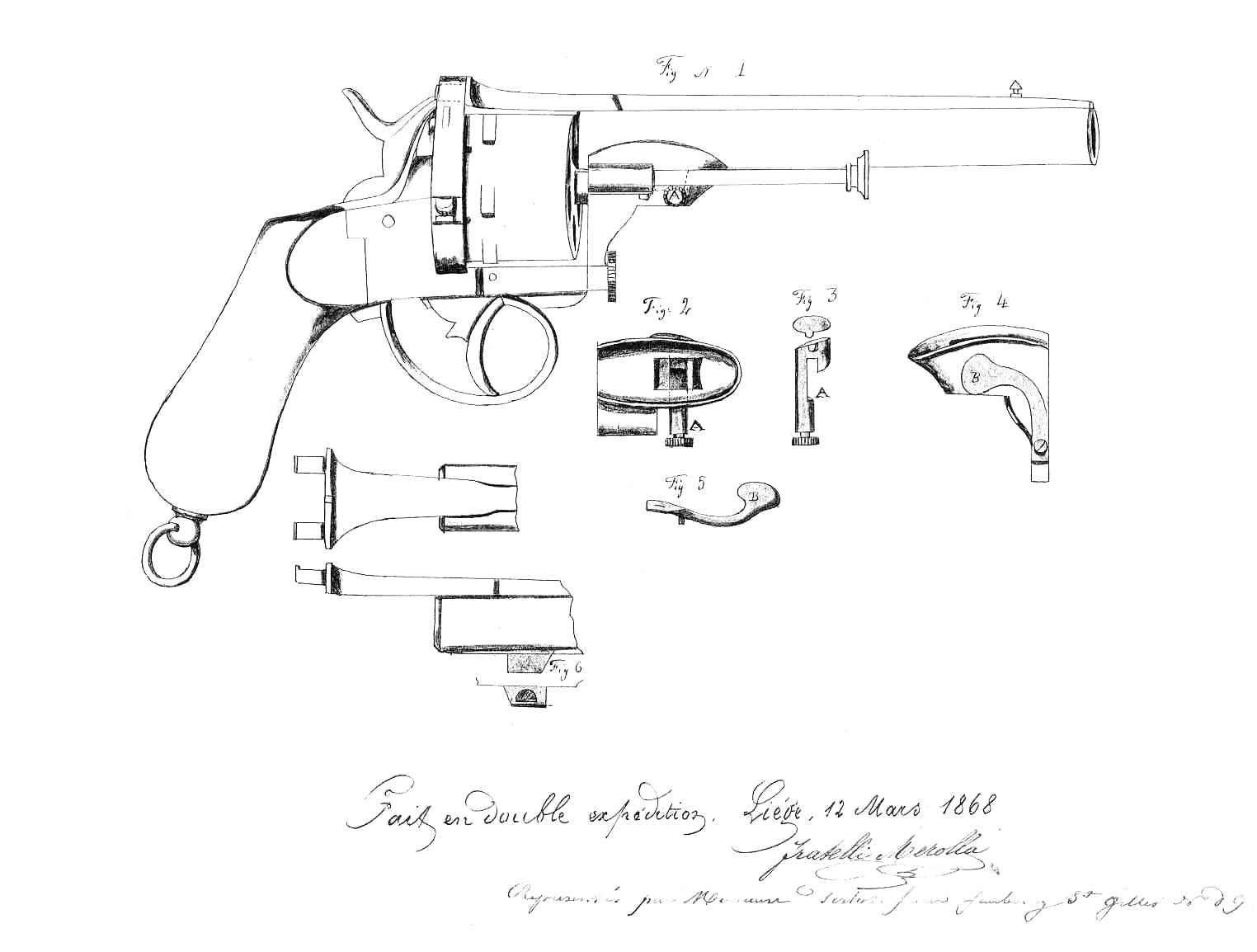Some of the most beautiful work of this craftsman, and many others, are in this book “Liège Gunmakers through their Work. 1800 - 1950”.
For more detail see: LIEGE GUNMAKERS
Merolla Giovanni & Francesco
The top strap that in a "snake tong" ends that are hinged on the frame behind the hammer, as well as the double locking of the lug by means of two screws (the one classical and moving from front to rear, the other one passing through the frame and the cylinder axis from left to right), were meant to give the weapon a good rigidity when fired.
Study of the patents establishes clearly that this weapon was developed by the Merolla brothers (Giovanni & Francesco), gunmakers in Naples (Italy) and Liège, who were granted patent 38720 on Jan 26, 1876 for improvements to a revolver with hinged top strap patented by their father Salvatore (pat.21162 dd 14.3.1867) and to their own patent 23148 dd 13.3.1868). The presented weapon is fully conform to the patent.
Although of Italian nationality, Salvatore and his sons Giovanni & Francesco obtained at least 15 patents in Belgium on rifles and revolvers of the Lefaucheux-type, and had most of their weapons manufactured in Liège during the 1860-1870 decade, which is why they are listed among the Belgian gunmakers.
Merolla Frères
Solid frame 7mm pinfire revolver.
To open the gun for loading operations, both the screw in front of the lug and the screw that holds the lug on the cylinder axis have to be removed.
The barrel can be removed to free the cylinder. The top strap has two pins that engage slots on the frame.
The weapon was manufactured by Merolla Bros.
Merolla Frères
It is a
revolver pinfire and box frame, made in Liège as evidenced by the Liège
proofmarks. The fluted barrel own 6 chambers. The barrel is octagonal with
raised front sight and the calibre is
9
mm. A metal rod is placed under the barrel and attached to the console.
To open
the gun, simply unscrew the screw fixing the barrel to the carcass and the screw
fixing the barrel on the shaft. The barrel comes off and releases the cylinder.
The part that closes the frame above the barrel is fitted into the carcass with
two pins.
The butt
consists of two beautifully carved wooden chimeras. They are held by a central
screw and two rosettes. The butt ends with a ring and its pivot screw.
The
punches
The
weapon bears the marks of the Liège proofhouse, namely:
ELG on a
star in a vertical oval: definitive acceptance, in use from 1846 to 1893.
U*:
Controller’s countermark, in use from 1877 to 1968.
Marks
Apart from serial number 435, the brands are
conspicuous by their absence. No brand of the Liège manufacturer. It could
nevertheless be a weapon of the
Merolla brothers
(see patent 23. 148 of 30. 04. 1868 attached)
GG


This
weapon works in single and double action.
The
original system for disassembling the revolver is also found on a revolver
marked Rube Bte (see 19th Century pistols and pocket revolvers by Dimitri Singer
page 95).
Rube was
an armourer at Montdidier in 1855.